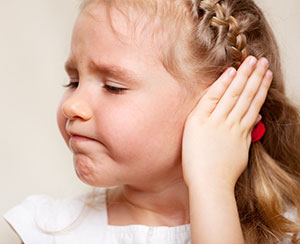From missing school to hearing problems, chronic sinus infections can have a serious impact on your child’s life. Conservative treatment is the first line of defense, but certain situations warrant sinus surgery to allow your child to breathe easier.
 Does My Child Need Sinus Surgery?
Does My Child Need Sinus Surgery?
Pediatric endoscopic sinus surgery has been a trusted method for over 20 years. During these procedures, a tiny camera and specialized surgical tools are threaded into your child’s sinuses. A few incisions are made inside the nose to help the camera pass. Your child’s ENT can then get a direct view of the problem.
Surgery is recommended when a child:
- Has a chronic infection that doesn’t respond to other treatment
- Has a blockage in the sinus that needs to be removed, like cysts or polyps
- Is having an exterior blockage, like the adenoids, removed and could benefit from having the sinuses drained as well
The goal of surgery is to alleviate the symptoms of sinus swelling (sinusitis), reduce the frequency of infection and improve airflow inside the nose. In some cases, the doctor may only remove thickened mucus and irrigate the sinuses to wash out infection. In other cases, they may need to remove a blockage or create new drainage points to reduce the risk of future infection.
Chronic Infection
To stay healthy, sinuses need good air circulation and the ability to drain when they need to. If they become blocked, children can experience chronic inflammation and possible infection when bacteria is trapped in the sinuses. Chronic infections that don’t respond to conservative treatment, like antihistamines and antibiotics, could require surgical intervention.
Children with allergies, blockages or compromised immune systems can be prone to chronic infection. Even thickened mucous can be enough to block the sinuses. Surgery allows your child’s doctor to address these blockages and give the sinuses a thorough rinsing.
Cysts and Polyps
Cysts and polyps are non-cancerous growths that can form inside the sinuses themselves. They impede air flow and can block the sinuses from draining. Cysts and polyps can be diagnosed with x-ray, CT scans, MRI or diagnostic nasal endoscopy.
Polyps are teardrop-shaped, abnormal tissue growths that form inside the nose. They’re often filled with air or fluid. The exact cause is unknown, but they’re linked to chronic infection and underlying conditions like cystic fibrosis. Nasal steroids can be used to treat small polyps, but surgery can be necessary when there are numerous or large polyps. During surgery, your child’s doctor will remove the polyps.
Mucus retention cysts are mucous-filled sacks that form when a mucus duct becomes blocked. They’re caused by chronic infection inflaming the sinus tissue and closing off the ducts. Most nasal cysts form in the maxillary sinuses, the sinuses on either side of the nose. Retention cysts can be asymptomatic and never bother your child at all. Surgery is only recommended if the cyst is causing pain or creating a blockage. During surgery, the cysts are punctured and allowed to drain. The doctor may restructure the area to prevent more cysts from forming.
Exterior Blockages
Any tissue that blocks the entrance or exit to the sinus cavity can trap fluid and infection inside. Some blockages, like excess bony tissue or a deviated septum, are present from birth. Others, like scar tissue or enlarged adenoids, develop with chronic allergies or infection.
Adenoids are the most common cause of blockage. These lumps of lymphatic tissue sit right at the connection of the nasal passage and the throat. If they become enlarged from chronic infection or irritation from allergies, they’ll block the nasal passage. Bacteria can also travel from the adenoids into the sinuses and cause chronic infection directly.
ENTs often recommended surgery to correct these blockages, and they may want to address the sinuses at the same time. This allows them to give your child’s sinuses a ‘fresh start’ and ensure mucous buildup doesn’t continue preventing proper sinus drainage.
What To Expect
Sinus surgery takes an average of 1 to 3 hours and is performed under general anesthesia. It’s often an outpatient procedure, but it’s normal for young children to be observed in the hospital overnight. It can be scheduled alongside other procedures like adenoidectomy or septoplasty.
After surgery, your doctor could recommend ointments, nasal sprays or irrigation. Pinkish drainage from the nose for the first few days is normal, and your child may cough or spit blood-tinged mucous. Your child’s sinuses might be packed to stem bleeding. Some packing dissolves on its own, but the doctor may need to remove it a week or two after the procedure.
Chronic infection should not keep your child from learning, playing and experiencing life to the fullest. If your child is suffering from chronic sinus infections, call Pediatric ENT of Oklahoma today.

